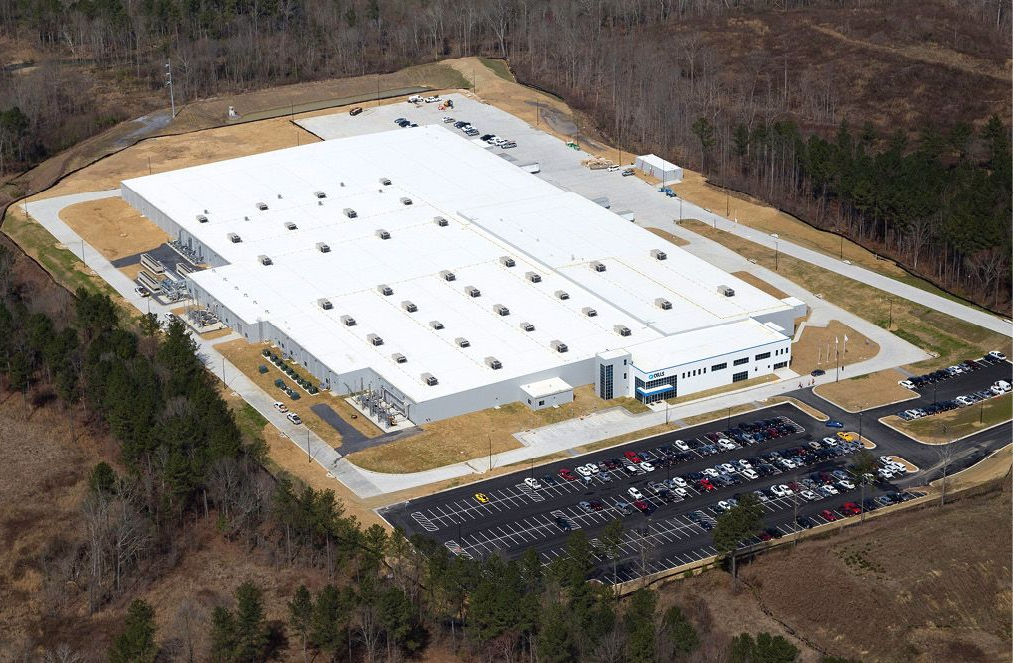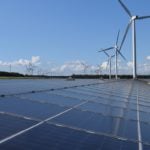Requiem for a Solar Plant
The email landed like a brick through a plate glass window.
“…requiring reconductoring of 1.71 miles at a cost of $795,150…limiting output to 3MW…”
I stared at my laptop screen, the blue light illuminating the shadows under my eyes in my darkened California living room. Outside, endless February rain tapped against the windows like impatient fingers. My gut churned, a familiar discomfort that had become my constant companion over the past year. This wasn’t just bad news. This was a death sentence.
Three years of work. Over a million dollars spent. A team scattered across three continents. All of it now threatened by two pages of engineering assessments and a single number: 3MW. My solar plant, originally planned for 4.54MW, had just been slashed by a third. The economics that had barely made sense before now collapsed entirely.
I reached for my phone and typed out a message to Mr. R.
Just saw the interconnection report. We need to talk.
The reply came quickly, despite the eleven-hour time difference. Mr. R had an uncanny ability to be available whenever needed, as though he never slept.
I’ve been reviewing the numbers. It doesn’t work.
I rubbed my temples, remembering the day years earlier when the Invictus Solar project had first crystallized in my mind—a perfect convergence of opportunity and purpose. I’d made a fortune by accident in cryptocurrency, more money than I’d ever dreamed of, and had been searching for something meaningful to do with it. Something that would generate sustainable returns while helping shift the world toward renewable energy.
The tax advantages alone had seemed almost too good to be true: stack the federal Investment Tax Credit for solar with the capital gains deferrals from the Qualified Opportunity Zone program, and you could turn marginal economics into attractive returns. It was financial alchemy—transforming crypto profits into clean energy infrastructure while minimizing tax exposure. Financial Projections (Pre-Interconnection Study)
– Total Installed Cost: $8,723,136 ($1.37/Watt DC)
– Capacity: 6375 kW DC / 4540 kW AC
– Net Capacity Factor: 23.8%
– Pre-tax IRR: -0.92%
– After-tax Equity IRR: 2.56%
– NPV: ($1,499,388) at 6% discount rate
– QOZ Tax Benefits: Estimated to add 3.7% to IRR
These projections relied on a $45/MWh PPA price and assumed 4.54MW AC capacity.
The reduction to 3MW in the interconnection study would significantly worsen these already-marginal returns.
Now, eighteen months later, sitting in my living room staring at the brutal economics of my failed project, I wondered how something so promising had gone so terribly wrong.
My phone rang. Mr. R.
“The land was good. The solar analysis was good. The land was flat. The price was right. The goddamn opportunity zone lined up perfectly,” Mr. R said, his Russian accent more pronounced than usual, betraying his frustration. “But Texas with it’s insane mineral rights and the interconnection study…”
I smiled despite myself. There was something comforting about Mr. R’s exasperation, as though his anger could somehow shield us both from the disappointment.
“Tell me again what they’re saying,” I said, reaching for a notepad. “The whole thing.”
“They want to limit us to three megawatts instead of four point five. They want us to pay nearly eight hundred thousand just to upgrade their wires. Another hundred and forty thousand for two reclosers. Plus tax.” Mr. R spoke with the precision of someone who had memorized every painful detail. “And even with all that, they still say there will be fault current violations. So they cut our capacity anyway.”
“Because the substation is too far away.”
“Four point six miles instead of the one or two we thought. The distribution circuit takes a winding path we couldn’t see from the satellite images. It goes to an entirely different substation. It’s not just the distance though, our neighbors on the line have ‘noisy usage’ ”
I stared at the ceiling, my mind racing through alternatives. Could we negotiate with the power company? Find another interconnection point? Redesign the system to work with the reduced capacity?
But I already knew the answers. We had spent months on these problems already. There was no alternative interconnection point on the property. The reduced capacity made the economics impossible. The numbers simply didn’t work anymore.
“So that’s it then,” I said softly. “We shut it down.”
The line went quiet for a moment.
“Yes,” Mr. R finally said. “We shut it down. But first, I calculate exactly how much money we have wasted.”
The Assembling
It started with a whiteboard session in my Palo Alto home in the summer of 2022, my kid running about in his underwear as I scribbled numbers and scenarios. Cryptocurrency had been an unexpected windfall for me, but I was painfully aware of the ecological footprint of mining. Moreover I squirmed at the 32.3% capital gains tax. California has an extra 12.3% on top of the 20% for federal long term capital gains There was a certain poetry in transforming those digital gains into physical infrastructure that would generate clean energy for decades.
“What’s the tax treatment on crypto profits if I roll them into a Qualified Opportunity Zone investment?” I’d asked my accountant.
His eyes had lit up—the first clue I was onto something interesting.
“If you structure this correctly, you could defer capital gains through 2026 and reduce the taxable amount by up to 10%. Then layer on the ITC for solar—that’s another 30% off your capital investment. It’s rarely this clean.”
I needed someone to help translate this concept into reality, someone I could trust with both technical expertise and independent judgment. The Astral Codex Ten community—a rationalist blog I frequented—provided the unexpected solution.
Mr. R’s application stood out immediately. Not because his experience perfectly matched the role—it didn’t—but because of what he’d done just weeks earlier. As Russian forces massed at the Ukrainian border, he had calmly assessed the probability of invasion, concluded it was imminent, and acted decisively. He’d quit his oil industry job and left Russia, a step ahead of what he correctly predicted would be a draft notice that would send him to the front lines. That kind of clear-eyed foresight couldn’t be taught.
Our first Zoom call revealed a muscular man with a shaved head and a perpetually amused expression, as though life’s absurdities were a private joke he alone understood.
The Team
– Project Manager: Mr. R (Russian national, relocated to Argentina during project)
– Business Analyst: Mrs. A (Friend brought onto project later)
– Project Backer: Me (Managing from California, then Singapore, then California again)
Key Contractors:
– Interconnection Consulting: EPE ($14,500)
– Engineering: HOLT Renewables ($113,718.44)
– Legal: SSCF&C ($18,684.39) – CPA: HCVT ($54,433.59)
Total staff and contractor costs before construction: $589,374.34
He spoke precise, technical English with a light Russian accent that thickened when he grew excited.
“You want to use cryptocurrency profits to build renewable energy infrastructure in a tax-advantaged zone,” he summarized. “A transformation of digital wealth into physical electricity generation. It’s elegant. When do we start?”
Within days, he was writing Python scripts to scrape property listings across Texas, overlaying them with opportunity zone boundaries and proximity to electrical infrastructure. The maps he generated were beautiful—technicolor visualizations showing potential sites as bright dots against the sprawling Texas landscape.
Meanwhile, my own situation grew complicated. I had been wanting to live abroad for a variety of reasons, including lower taxes. My wife, born in India but long since accustomed to American life—had was enthusiastic about a move that would take us closer to her family. Singapore seemed the perfect fit: developed infrastructure, a fast and easy visa process, and direct flights to her hometown in India.
We shipped our belongings across the Pacific and signed a two-year lease on a small house in the Katong area, about a 15 minute walk to the beach. The city-state gleamed with efficiency and wealth, its immaculate streets and towering skyscrapers a stark contrast to the dusty Texas parcels I was evaluating from afar.
Three months in, Singapore’s tropical climate had transformed me in unexpected ways. My gut microbiome rebelled against some unknown element—probably the food, maybe the mold, no one could say for certain. My hormones went haywire. I found myself bedridden for weeks at a time, sleeping thru days and nights in our perfectly climate-controlled apartment.
“The Roby parcel is promising,” he texted one especially bad afternoon. “Flat terrain, opportunity zone status confirmed, distribution line runs along the southern border. Initial interconnection assessment looks favorable.”
I couldn’t muster the energy to reply, but Mr. R didn’t need constant direction. He proceeded methodically, working with our growing network of contractors to assess the viability of what would become the Invictus Solar project.
By the time my family admitted defeat in Singapore and shipped our belongings back to California—another wrenching international move while I battled persistent illness—Mr. R had assembled all the pieces.
The Roby parcel. A year-long lease with an option to buy. An initial interconnection study showing 4.54MW of available capacity. We had been hoping and aiming to build a 9.9 MW facility. Texas allows an accelerated interconnection process for anything under 10MW, but the QOZ requirement severely filtered where we could build, and cranking down capacity was something I could live with A preliminary engineering design for a 6.4MW DC / 4.5MW AC solar array using bifacial modules with fixed tilt.
It all looked perfect on paper.
Except for two issues we had overlooked.
We had measured the distance to the substation as the crow flies. But electricity doesn’t flow as the crow flies. It follows the distribution circuit, winding its way through the rural Texas landscape like a river following the path of least resistance. The preliminary reports from the power company said it was a non-issue, but as it turns out those are, as Mr. R would say, “unreliable”.
The second issue was mineral rights.
The Mineral Kingdom
“In Texas, mineral rights supersede surface rights by law,” she continued. “If someone owns the minerals beneath your solar plant and wants to extract them, they have the legal right to tear down your installation to access those minerals.”
My mouth went dry. “But our surveys show there’s nothing valuable underground. No oil, no gas, nothing worth extracting.”
“Doesn’t matter,” she replied, leaning forward. “Your solar plant is worth millions. Your insurance company won’t touch it without waivers from the mineral rights holders, saying they won’t exercise that right of access. It’s about risk, not reality.”
I nodded, trying to look composed while my mind raced through implications. “So we just need to find who owns these rights and get them to sign a waiver. How hard can that be?”
Usually it’s not a problem, You just make an offer at the going rate
Mineral rights in Texas, it turned out, were a bizarre subterranean world with byzantine laws and scattered fiefdoms.
Texas Mineral Rights: A Primer
In Texas, land ownership is often separated into surface rights and mineral rights. When these rights are “severed” (owned by different parties): Mineral rights legally dominate surface rights, the right of access to extract minerals Mineral rights can be subdivided among multiple owners, Often this is poorly recorded. When owners die without specifying mineral rights in wills, ownership fragments among heirs PPP Ownership can become extremely fragmented over generations.
None of these ownership changes are recorded by the state by default. An interested third party needs to find the obituaries, and then go from county clerk to county clerk requesting that each one be recorded in a strange mixture of genealogy and bureaucracy. Insurance is typically unavailable for infrastructure without mineral rights waivers. Mortgages are unavailable without insurance. For the Roby parcel, ownership had fragmented to 27 different parties, with two entities controlling ~40%.
Our parcel’s mineral rights had been severed from the surface rights decades ago. Then repeatedly subdivided. Then inherited. Then subdivided again.
The Mineral Ownership Report arrived three weeks later—a dense document revealing the scope of our challenge. Twenty-seven different people owned portions of the mineral rights beneath our would-be solar array. Two major holders controlled about 40%, with the remainder scattered among twenty-five others, some owning fractions so small they amounted to mineral dust.
A waiverwaver from the single largest stakeholder would be enough to satisfy our insurers, we had our agent reach out about getting a waiver.
Actually these mineral rights were left to me by my grandfather. I have quite a sentimental attachment to them. I’m not interested
I thought this was just a polite way of saying that they wanted more money than the market rate, so we reached back out with a higher offer.
I told you they were sentimental mineral rights. Please don’t contact me again
We hired Western Land Services, specialists in mineral rights acquisition, to deal with all of the records and to contact the array of rights holders and secure waivers.
Meanwhile, I battled my own physical terrain. The gut issues from Singapore persisted back in California, though less severely. By keeping an extremely restricted diet I went on a very careful elimination diet, starting with potatoes and bone broth, and expanding to little else besides organic meat and dairy I was able to feel almost normal, able to focus for hours on end. Other days, exhaustion descended, leaving me unable to accomplish much beyond feeding myself. Doctors prescribed various treatments, most didn’t help, and I resisted the more dramatic interventions trying to manage things thru diet.
Through it all, Mr. R kept the project moving with relentless efficiency. His situation had its own complications. Having fled Russia, he’d settled temporarily in Argentina, working remotely while navigating visa issues. Our team calls sometimes featured background noise from Buenos Aires cafés, the clatter of espresso cups and rapid-fire Spanish creating a surreal backdrop to discussions of Texas mineral rights and solar panel configurations.
By October 2024, we’d spent over $100,000 just trying to resolve the mineral rights situation. Insurance companies offered creative solutions. Normally we needed to secure waivers from owners controlling 50% of the rights, for them to consider coverage. If we set aside dedicated drilling areas within our property, that apparently we could reduce that percentage. It looked ugly but solvable.
Our engineers redesigned the solar array, moving it from the southern boundary to the northern section of the property, closer to the distribution line that ran along the county road. The redesign cost $30,000—steep, but far less than the half-million dollars it would have cost to run cabling across the property.
The lease on the property was up, and it was time to either buy it or abandon the project. I decided to fly to Texas and have a physical look at the actual property. It would also be a great chance to meet some of the people we had been working with remotely. The property was beautiful and huge. I had known that on paper it was a large plot, about ten times what we needed for an already large solar facility, but walking across it drove home just how much land we were talking about. It also sported a lovely little cabin, and I harbored fantasies of spending time out there watching the actual construction happen.
The Texas trip, however, proved too much for my body. When I got back I crashed hard, nearly three weeks in bed except for meals. My wife began to contemplate what it would be like to be a widow. My doctor finally talked me into some of the more aggressive hormonal interventions. They worked well and I was able to return to a more or less normal life, though I continue to this day to be on a drastically restricted diet.
In the mineral kingdom beneath our feet, twenty-seven strangers held the power to scuttle our dreams. But above ground, the true arbiter of our fate would be the distribution circuit capacity, hidden in plain sight along the northern boundary of our would-be solar farm.
The Grid’s Judgment
February in Texas brings a particular quality of light—sharp and clear, lacking the hazy intensity of summer. It was in this crystalline light that our dreams finally shattered.
The full interconnection study arrived without ceremony. Just an email with a PDF attachment from AEP-Texas, appearing on a Tuesday morning. All of our concerns and focus were on resolving the mineral rights situation. We simply assumed the detailed interconnection study would match the preliminary one.
Mr. R had already seen it. He called before I’d finished reading the executive summary.
“It’s worse than we expected,” he said without preamble, bringing up the documents in a zoom window.
The study was dense with technical jargon, but its conclusion was brutally clear. To interconnect our solar plant, we would need to:
Reconductor 1.71 miles of distribution line at a cost of $795,150
Install two new reclosers for $137,984
And even after these upgrades, our capacity would be limited to 3MW—not the 4.54MW originally indicated, much less the 10MW we had set out to build.
Interconnection Report Details
The final study identified several violations that would occur if our 4MW project were connected:
Over-voltage (>126V)
Fault current change at PCC exceeding 10%
Rapid voltage change violations Required mitigations:
Reconductor 1.71 miles of 2/0 AL with 477 AL at 100C: $795,150
Upgrade recloser at pole 42602576932621: $68,992
Remove fuses and install Viper recloser at pole 42602516931052: $68,992
Federal Gross-Up Tax: $96,392
Total interconnection cost: $1,029,526
Even with these upgrades, output would be limited to 3MW instead of 4.54MW due to persistent fault current issues.
I stared out my office window at the California sunshine, so similar yet so different from the Texas light falling on our empty parcel. A million dollar upgrade requirement. A 33% reduction in capacity. The financial model that had already been balanced on a knife edge now collapsed completely.
“Why didn’t they tell us this in the preliminary assessment?” I asked, though I already knew the answer.
“The preliminary assessment is just that—preliminary,” Mr. R replied. “They look at maps and theoretical capacities. The real study is when they measure the actual wires in the ground, test the equipment. I spoke with their engineer. He said they no longer even put cost estimates in preliminary reports because the discrepancies cause too many angry customers.”
I laughed, a short bark devoid of humor. “Well, they were right about that.”
The fundamental issue was quality. Those 4.6 circuit-miles between our point of interconnection and the substation meant power had to travel a long way. The existing wire should have been able to handle our plant’s output without creating unacceptable voltage fluctuations, but it had degraded in the ground. Even with upgraded wire, the fault current, the surges of electricity introduced by other users on the line, would still exceed safety limits at 4MW.
“If we had known that the wires run in crazy directions to the substation, we would have filtered our property search differently,” Mr. R said, his voice tinged with frustration. “We just followed the visible power lines on the map”
“Well, we know for next time” I replied, almost automatically. I tend to be stubborn.
Next time. The words hung in the air.
Was there going to be a next time? After eighteen months of work, over a million dollars spent, and nothing to show for it but a deeper understanding of Texas mineral rights and distribution circuit physics?
“Let me ask you something,” I said after a moment. “If we were to try again, what would you do differently?”
Mr. R didn’t hesitate. “Run five projects through the process simultaneously. Most will fail for reasons you cannot predict. With five, one might succeed. And switching to batteries instead of solar. Or at least solar plus storage.”
“Have you been following the political situation?”
Donald Trump had won, and his administration was already announcing plans to impose massive tariffs on Chinese imports, including solar panels and battery cells. The regulatory environment that had made our project potentially viable was shifting beneath our feet like Texas sand. The Republican controlled House and Senate were not terribly keen on solar.
“The ITC might not survive,” I said quietly. “And even if it does, the tariffs would kill us on equipment costs.”
“Exactly.” Mr. R’s voice was matter-of-fact. “Also the QOZ program is expiring. We started at the right time, now it’s the wrong time.”
The irony wasn’t lost on me. The political shift would likely kill more projects than all the technical challenges we’d faced. Wild swings and regulatory uncertainty meant no one could model a thirty-year return on investment when the rules might change completely next month.
The next steps were clear. Shut down the project. Close the company. Pay the final invoices. Put the land up for sale.
Write the post-mortem.
Help Mr. R find a new job. If you want to hire an amazing general manager, talented programmer, and generally capable and agentistic guy, please get in touch with me, I’ll connect you
Write a blog post.
I looked out at the California sun again, thinking of all that Texas light falling uselessly on our empty parcel. Light that would never be converted to electricity. Never flow through those reconductored wires. Never power a single home.
https://7goldfish.com/articles/Requiem_for_a_solar_plant.php




